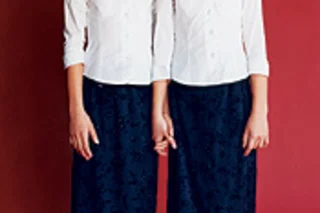All roads lead to me,” says Nancy Segal, as the car turns down a residential street just south of Los Angeles. On her way to visit a favorite set of identical twins, she is not bragging about her status. If you are a scientist or a journalist pursuing the characteristics of twins, sooner or later you will come across Nancy Segal, the doyenne of didymology in America.
The 53-year-old psychology professor is the author of an everything-you-wanted-to-know book called Entwined Lives: Twins and What They Tell Us About Human Behavior. She writes a bimonthly news column about notable twins in academia, the arts, and sports for the journal Twin Research, and she directs her own behavioral studies of twins from the helm of the Twin Studies Center at California State University at Fullerton.
Part of Segal’s authority comes from being a twin herself. Her sister, a lawyer, lives on the ...















